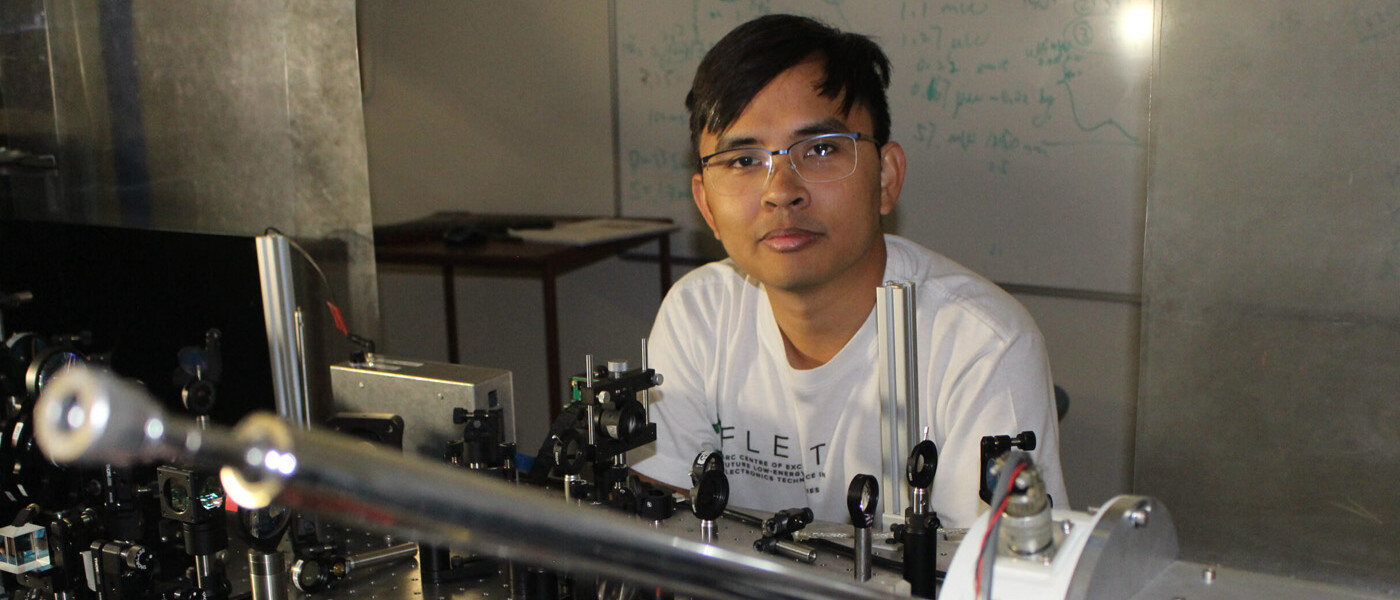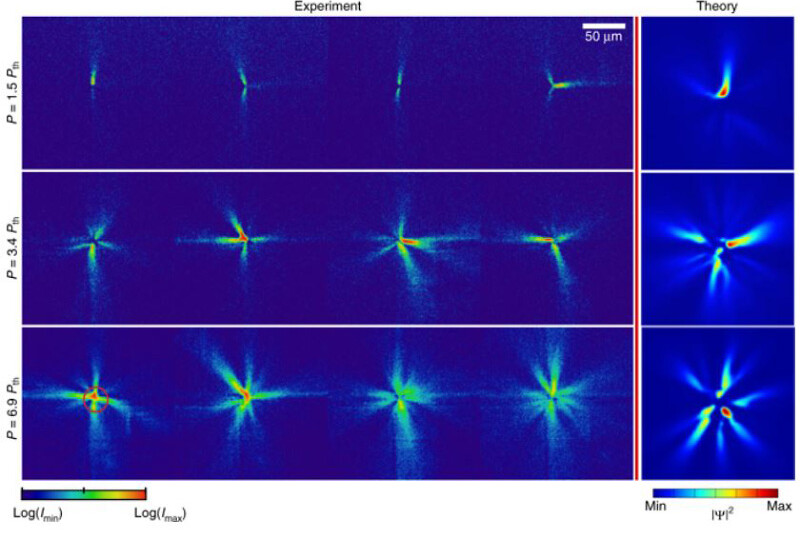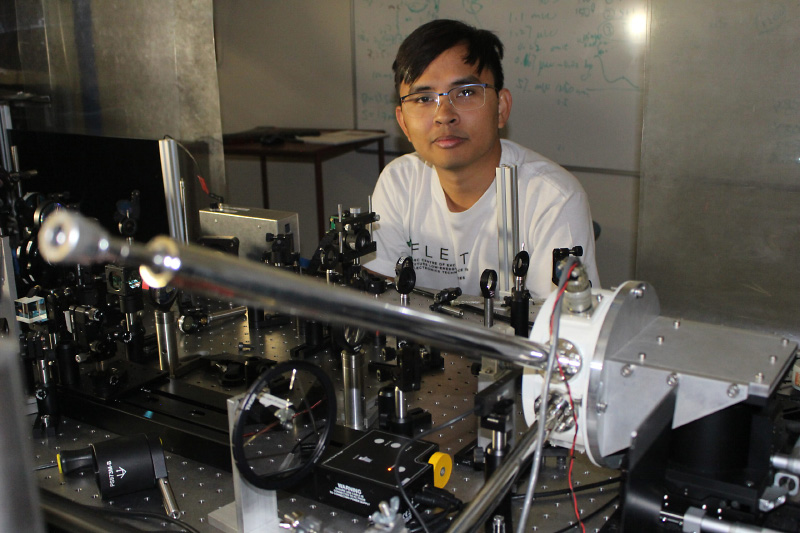
Previously, observations of the hybrid particles known as ‘exciton-polaritons’ in a Bose-Einstein condensate had been limited to statistical averaging over millions of condensation events.
‘Snapshot’ imaging of polaritons forming a condensate in a typical inorganic semiconductor was considered impossible.
However, in 2018, FLEET researchers at ANU led an international study imaging exciton-polaritons for the first time as a ‘single shot’, rather than averaging.
“This offers a unique opportunity to understand the details of Bose-Einstein condensation of exciton-polaritons,” explained lead author Dr Eliezer Estrecho (ANU).
Such fundamental advances also significantly advanced FLEET’s research on excitonic condensation and superfluidity as a mechanism for electronic conduction without wasted dissipation of energy.
‘Exciton-polaritons’ are hybrid quantum particles that are part matter and part light, bound together by strong coupling of photons and electron-hole pairs (excitons) within a semiconductor microcavity.
However, because exciton-polariton lifetimes are measured in picoseconds (trillionths of a second), previous observations of their behaviour had always necessitated averaging over a million lifetimes of many, many exciton-polaritons.
This is like taking a long exposure of moving objects: you get a blurred image.
The ANU team made sure that, instead of the blurred image, their sensitive camera captured only one lifetime or ‘single shot’ of the condensate. This let them observe behaviour of exciton-polaritons that had never been seen before.
The single-shot imaging was performed by analysing photoluminescence caused by the decay of exciton-polaritons, a technique thought to be impossible in inorganic microcavities because emissions simply weren’t bright enough.
Usually, the density of exciton-polaritons trapped in inorganic microcavities is too low to be detected in single-shot mode, partly because exciton-polaritons do not live long enough for the density to build up.
To get a better signal, the team used ultra-high-quality samples designed and made by collaborators in the USA, extending the lifetime of polaritons by an order of magnitude and pushing the density high enough for the sensitive camera to detect.
The imaging revealed that, contrary to the smooth condensate observed in averaged experiments, the condensate actually forms filaments whose orientation varies from shot to shot.
The study found remarkable agreement between experiment and numerical simulations, validating the background theory of exciton-polariton condensate dynamics.
The work paved the way for further fundamental studies of quantum phase transitions and non-equilibrium condensation in solid-state systems.
These single-shot experiments could prove critical for our understanding of the fundamental (and still debated) nature of the condensed phase in these systems.
“This research allows us to combine very deep, fundamental questions about the nature of quantum phase transitions in a solid state and, at the same time, is very promising for future applications in low-energy electronics.”
— Prof Elena Ostrovskaya, FLEET Chief Investigator, ANU





